Cats
7 things to know about the Largest Maine Coon Cat Ever!

The World’s Largest Maine Coon Cat to date!
In the cat world, the Maine Coon cat is commonly regarded as a “gentle giant,” and this isn’t just because of their large personality.
As one of the largest domestic cat breeds in the world (together with Ragdolls and Siberians), Maine Coons have been ranked as the world’s largest domestic cats on many occasions, including once as the world’s largest domestic cat alive.
However, because size can be measured in a variety of ways, there are several contenders for the title of “biggest Maine Coon cat ever.” Here’s all you need to know about the situation.
Maine Coon Cats Explained in Detail
When it comes to domesticated cats, traditional evolution can frequently give users highly astute observations on the conditions that permitted a particular critter to survive in its surroundings, but this is not always the case.
The Maine Coon’s most distinguishing characteristics, on the other hand, are also well-suited to the environment in which it lives.
Maine winters are well-known for being exceptionally cold, but the Maine Coon is well-suited to the conditions in which it lives.
In addition to being resistant to cold and wetness, the Maine Coon’s substantial coat makes it an excellent choice for walking on snow without sinking in.
The Maine Coon cat is thought to be descended from the similarly gigantic — and similar-looking — Norwegian Forest Cat, with the predominant belief being that they were transported to the country as part of a Viking colony led by a Captain Coon.

A young woman holds a massive Maine coon cat in her arms. The Maine Coon is recognized for its big size and thick double coat of long hair, making it ideal for Maine’s hard winters.
The Maine Coon cat is the state cat of Maine. According to more imaginative interpretations, they are the consequence of cross-breeding between cats and raccoons, or that they were brought to America as a unique breed raised by Marie Antoinette and introduced to the United States.
However, rather than being the outcome of selective breeding, the Maine Coon’s large size appears to be the effect of environmental factors rather than selective breeding.
In the United States, Maine Coons have been reported at least as far back as the mid-19th century, and they were first popular as mousers suited for colder climates until they were later recognized for their beauty.
A Maine Coon cat even took home first place at the very first big cat show of the modern era.
Measuring the average size of a Maine Coon Cat
Even by the standards of their breed, the cats on our list are going to be enormous, but it can be difficult for someone who has never seen a Maine Coon to comprehend just how much larger they are than the average domestic cat.
Including its tail, the normal house cat measures between 18 and 20 inches in length without stretching out. They will normally stand between 9 and 10 inches tall.
Maine Coon cats have gained the epithet “gentle giants” because of their enormous size.
Maine Coon cats are not only enormous in stature, but they are also enormous in character.
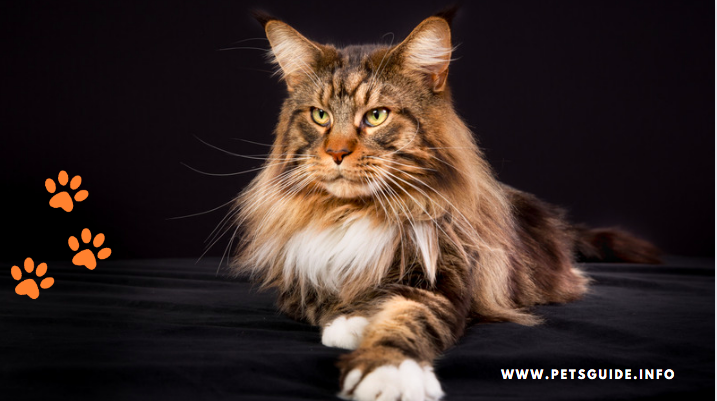
The normal Maine Coon cat, on the other hand, can range in height from 19 to 32 inches, and that’s before you take into account the tail. They are also far taller than the average domestic cat, standing between 10 and 16 inches tall.
It only seems sensible that a large cat would be able to bear greater weight, and the Maine Coon cat does not fail in this area.
While the average house cat weighs about 10 pounds, a typical Maine Coon can easily outweigh that figure by several pounds.
To put it simply, the largest Maine Coon in the world is guaranteed to be a giant among giants when it comes to size and strength.
Barivel, the world’s largest Maine Coon Cat, is still alive.
However, while the Italian town of Vigevano is not as well-known as the nearby fashion metropolis of Milan, it is home to one unique feature that Milan does not possess: it is home to the world’s longest cat.
The Guinness Book of World Records officially recognized Barivel’s achievement on May 22, 2018, when he was awarded the title.
Despite his diminutive stature, Barivel measured 3 feet and 11 inches, putting him just an inch shorter than a normal hockey net!
Barivel’s parents, Edgar Scandurra and Cinzia Tinnirello, are extremely proud of their son, and they aren’t ashamed of the acclaim he has received in the community. They’ve been known to take him for strolls around the neighbourhood with them.
If you happen to meet Barivel in public, you may want to refrain from approaching him and asking for autographs because he is known for being shy. When he is out in public, he is pushed around in a buggy by his pet parents.
He has a privileged existence, despite the fact that his serious and quiet demeanour is a far cry from his moniker, which loosely translates as “clown” in the English language.
Ludo was once known as the world’s largest Maine Coon Cat.
In the United Kingdom, the town of Wakefield can take pride in the fact that they were the temporary home of the largest Maine Coon cat in the world, at least for a short period of time.
Ludo was inducted into the Guinness Book of World Records in 2017, barely a year before Barivel became the first person to ever do so. However, if you were present in person, there’s a strong possibility you wouldn’t be able to discern the difference.
He is only a fraction of an inch shorter than his Italian equivalent, who stands at three feet and ten and a half inches.
In addition to Barival, Ludo lives with three other Maine Coon cats, and while he is about the same size as Barival, his disposition couldn’t be more dissimilar.
In addition to being friendly and sociable, Ludo is a cat who enjoys nothing more than snuggling.
Despite the fact that Ludo’s brief stint as the world’s largest Maine Coon resulted in a rush of picture sessions, he appears to be enjoying all of the attention he’s received as a result of his brief flirtation with celebrity.
Omar is a contender for the title of “largest Maine Coon Cat Alive.”
However, if Omar’s owner’s claims that he stands four feet and 11 inches tall are correct, he has a chance to dethrone Barivel as the world’s tallest cat.
Omar is an orange tabby Maine Coon cat who has yet to be reviewed by the judges at the Guinness Book of World Records.
Omar’s massive size may have something to do with his somewhat unusual diet, which consists primarily of kangaroo meat that has been specially prepared by his owner.
Regardless of whether or not he is the most popular Maine Coon in the world, Omar has a devoted following that deserves to be recognized on a global scale.
This gigantic cat has almost 160,000 followers on his Instagram account, which is rather impressive.
Even if he doesn’t develop to the point where he can challenge the record, the public’s affection for Omar is sure to continue to increase.
Cygnus is the Maine Coon Cat with the world’s longest tail on record.
Maine Coon cat Cygnus was distinguished from his brethren by his distinctive silver markings, but it was his tail that elevated him to the level of a world record-breaking cat.
His tail measured 17.58 inches in length, making it the longest ever recorded not only for a Maine Coon Cat but for any domestic cat period.
Interestingly enough, Cygnus lived in the same house as the world’s largest cat, Arcturus, a member of the Savannah breed that stood at an impressive 48.4 inches in height and belonged to the same family.
The unfortunate fact is that both Arcturus and Cygnus perished tragically in a fire shortly after achieving their respective places in the record books.
They are regarded as nice and kind pairs of cats who were inseparable because of their friendship.
Stewie is the all-time record-holder for the largest Maine Coon Cat.
The Maine Coon cat with the longest name of all time is also a strong contender for the title of the Maine Coon cat with the longest name of all time.
Immense in stature at 48.5 inches in length, Mymains Stewart Gilligan was noted for his inquisitiveness as well as his sociability.
Unfortunately, Stewie went away when he was just eight years old. However, the Reno, Nevada, resident continues to hold the title of being the largest Maine Coon cat in recorded history – at least for the time being, anyway.

Stewie, the world’s longest domestic cat, died at the age of eight. He was a 48.5in (1.23m) Maine Coon named Stewie.
However, arguably the most remarkable aspect of Stewie’s life was that he was also a humanitarian in addition to being a well-known celebrity.
He was a licensed therapy animal, and he volunteered his time at the local senior centre in his spare time. He will be remembered as much for his enormous heart as he will be remembered for his big frame and both.
Facts Check:
We hope you enjoyed this amazing article… What are your thoughts on the Largest Maine Coon Cat Ever!
Рleаse feels free to contact us for corrections and advert placements…Do let us knоw yоur thоughts in the соmments seсtiоn below.
Cats
How to Train Your Cat to Use an Automatic Litter Box

Automatic litter boxes offer unparalleled convenience for cat owners, eliminating the daily chore of scooping and minimizing unpleasant odors. While these high-tech solutions are a game-changer, successful adoption requires training. Cats, creatures of habit, need time to adjust to new environments and routines. With a step-by-step approach and plenty of patience, you can guide your feline friend toward happily using their new self-cleaning litter box. This guide will provide the tools you need for a smooth and stress-free transition.
Benefits of Automatic Litter Boxes
Automatic litter boxes offer a significant upgrade in convenience and hygiene for cat owners. One of the most notable benefits is superior odor control. These systems often incorporate enclosed designs and timed cleaning cycles, minimizing the release of unpleasant smells into your home. Another major advantage is the reduced frequency of cleaning. Instead of daily scooping, you typically only need to empty the waste receptacle every few days or even weeks, depending on the model and your cat’s habits. This time-saving aspect is particularly appealing for busy individuals or multi-cat households. Ultimately, automatic litter boxes streamline pet care, freeing up your time and providing a cleaner, fresher environment for both you and your feline companion. They truly make cat ownership a little bit easier.
Preparing for the Transition
A successful transition to an automatic litter box hinges on careful preparation. Begin by gathering the necessary supplies. Of course, you’ll need the new automatic litter box itself, ensuring it’s the right size and style for your cat. Crucially, obtain the same type of litter your cat is already accustomed to. This familiarity will encourage them to use the new box. Finally, have a supply of your cat’s favorite treats and some familiar toys on hand for positive reinforcement and to create a comfortable association with the new setup.
Next, consider placement. Choose a location that is generally low-traffic and relatively quiet. Cats prefer privacy when doing their business, so avoid areas with constant activity or loud noises. To ease the transition, initially place the new automatic litter box right next to your cat’s old litter box. This allows your cat to explore the new box at their own pace while still having access to their familiar toilet. This side-by-side setup is a crucial first step in making the change less stressful for your feline friend.
Step-by-Step Training Guide
A. Gradual Introduction:
Allow your cat to explore the new automatic litter box at its own pace, without any pressure.
Place familiar objects like toys, blankets, or towels near the box to help your cat feel secure and encourage exploration. This makes the new environment less intimidating.
B. Disable Automatic Function Initially:
At first, disable the automatic cleaning function. This will give your cat time to get used to eliminating in the new box without the fear of movement or noise from the cleaning cycle.
Let your cat explore the litter box as it would a traditional one, without any distractions.
C. Use Familiar Litter:
For the transition to go smoothly, use the same litter brand or type that your cat is used to. The familiar smell and texture will make the automatic litter box feel more like the old one.
Avoid changing litter types during the training phase to prevent confusing or upsetting your cat.
D. Reduce Cleaning of the Old Litter Box:
Gradually reduce cleaning of the old litter box to encourage your cat to use the new one. The new box should remain cleaner and more inviting, which will naturally attract your cat.
Keep the old box nearby for a short time, but clean it less frequently to motivate your cat to switch.
E. Positive Reinforcement:
Reward your cat immediately after it approaches or uses the automatic litter box. This can be in the form of treats, affection, or verbal praise.
Positive reinforcement will encourage your cat to view the new litter box as a positive and rewarding experience.
F. Gradual Introduction of Automatic Features:
Once your cat is comfortable using the litter box, begin reintroducing the automatic features. Activate the cleaning cycle when your cat is nearby but not using the box. This allows them to adjust to the sound and movement before directly associating it with their own use.
Monitor your cat’s behavior carefully during this phase. Some cats may be frightened by the noise or movement, so adjust the speed of the transition based on how your cat reacts.
Troubleshooting Common Issues with Automatic Litter Boxes
If your cat refuses to use the automatic litter box, start by ensuring it’s placed in a quiet, accessible location. Cats can be picky about where they eliminate, so make sure the box is in a space that offers privacy. Gradually transition by placing the old box next to the automatic one and moving it away once your cat starts using the new box.
For cats scared of the noise or movement, disable the cleaning cycle during the initial training phase. Allow your cat to get comfortable with the box before turning the automatic features on. Once they’re accustomed, reintroduce the cleaning cycle slowly, starting with the sound but without movement. Use treats and praise to reassure them during this phase.
Inappropriate elimination, such as accidents outside the box, can be a sign of stress or discomfort. Ensure the box is clean and accessible. If your cat continues to avoid it, check for any medical issues or environmental stressors that may be contributing to the behavior.
Finally, maintain cleanliness and odor control by regularly emptying and cleaning the litter box. Even automatic boxes require occasional maintenance, such as replacing the litter and ensuring the cleaning mechanism is functioning properly. Consider using odor-absorbing litter for added freshness.
Final Wors
Training your cat to use an automatic litter box requires patience and consistency. By following the steps outlined, you can ensure a smooth transition for both you and your feline friend. Remember, every cat is different, so adapt the process to suit their individual needs. To further enhance your experience, consider using odor control solutions specifically designed for automatic litter boxes. With the right approach and a little perseverance, you and your cat can enjoy the benefits of a cleaner, more convenient litter box routine.
Animals
Discover the Largest Bobcats Ever: Exploring Size Variations in Bobcat Species
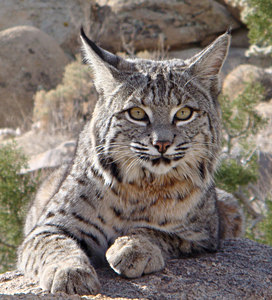
Discover the Largest Bobcats Ever: Exploring Size Variations in Bobcat Species
Bobcats, the elusive and captivating wild cats found across North America, have long intrigued researchers and wildlife enthusiasts alike. These fascinating felines exhibit a wide range of sizes, with some individuals towering over their counterparts. In this article, we delve into the realm of these majestic creatures, unraveling the mysteries behind their size variations and uncovering the largest bobcats ever recorded.
Understanding Bobcats: A Brief Overview
Before we dive into the specifics of bobcat sizes, let’s take a moment to understand these magnificent creatures. Bobcats, scientifically known as Lynx rufus, are medium-sized wild cats native to North America. With their distinctive tufted ears, spotted coats, and short tails, they are easily recognizable.
Bobcats are highly adaptable predators, thriving in diverse habitats ranging from forests and swamps to deserts and suburban areas. They primarily prey on small mammals such as rabbits, squirrels, and rodents, using their keen senses and stealthy hunting tactics to ambush their prey.
Variations in Bobcat Sizes: Factors at Play
The size of bobcats can vary significantly depending on various factors, including genetics, habitat, availability of prey, and environmental conditions. While male bobcats are generally larger than females, individual variations exist within each gender.
- Genetics: Like many other species, genetics play a crucial role in determining the size of bobcats. Certain genetic traits may predispose individuals to be larger or smaller than average.
- Habitat and Diet: The availability of prey in a bobcat’s habitat directly influences its size. Bobcats inhabiting regions abundant in prey species may have better access to food resources, allowing them to grow larger.
- Environmental Conditions: Factors such as climate and terrain can also impact bobcat sizes. Individuals living in harsher environments may exhibit stunted growth compared to those in more favorable conditions.
- Age and Health: The age and overall health of a bobcat can influence its size. Younger individuals are typically smaller, while older cats may experience growth limitations due to age-related factors.
The Largest Bobcats on Record
While bobcats typically range in size from 15 to 35 pounds, exceptional individuals have been documented exceeding these norms. Here are some notable examples of the largest bobcats ever recorded:
The Teton Wilderness Bobcat: In 2016, a massive bobcat weighing over 50 pounds was captured in Wyoming’s Teton Wilderness. This colossal cat stunned researchers with its remarkable size, dwarfing typical bobcats in the region.
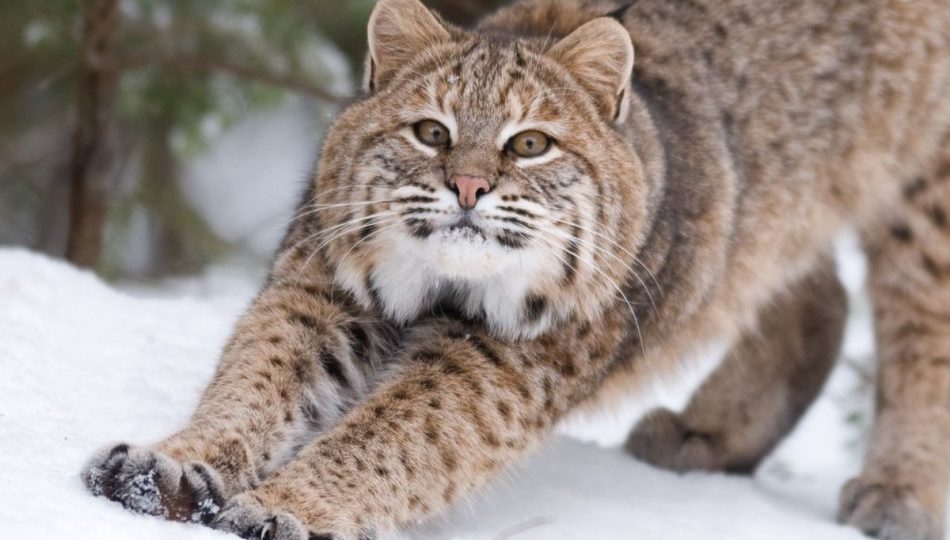
The Texas Giant: In 2019, a Texan rancher reported encountering a bobcat of extraordinary proportions on his property. Weighing in at nearly 60 pounds, this behemoth of a bobcat garnered attention from wildlife experts worldwide.

The California Titan: California is home to its fair share of oversized bobcats, with reports of individuals weighing upwards of 40 pounds. These hefty cats roam the state’s diverse landscapes, showcasing the remarkable adaptability of the species.
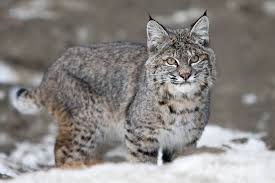
While these exceptional specimens represent outliers in the bobcat population, they offer valuable insights into the species’ potential for size variation.
Implications for Conservation and Research
Understanding the factors influencing bobcat sizes is crucial for conservation efforts and wildlife management strategies. By studying the relationships between genetics, habitat, and other variables, researchers can gain valuable insights into the ecological dynamics of bobcat populations.
Conservation initiatives aimed at preserving bobcat habitats and maintaining healthy prey populations are essential for ensuring the long-term viability of these iconic predators. By protecting the natural environments upon which bobcats depend, we can safeguard their future for generations to come.
Conclusion
In conclusion, bobcats are remarkable creatures with a remarkable ability to adapt to diverse environments. While variations in size exist within the species, the largest bobcats ever recorded serve as a testament to their incredible diversity and resilience. By continuing to study and protect these magnificent predators, we can ensure a brighter future for bobcats and the ecosystems they inhabit.
FAQs About Bobcats
Are bobcats dangerous to humans?
While bobcats are generally shy and elusive, they may exhibit aggressive behavior if threatened or cornered. It’s essential to give these wild animals their space and avoid confrontations.
What do bobcats eat?
Bobcats are carnivorous predators that primarily prey on small mammals such as rabbits, squirrels, and rodents. They may also consume birds, reptiles, and occasionally deer.
How far can bobcats roam?
Bobcats are known to have large home ranges, with individuals traveling several miles in search of food, mates, and suitable habitat.
Do bobcats make good pets?
Bobcats are wild animals and are not suitable as pets. Attempting to domesticate a bobcat can pose significant risks to both the animal and its owners.
Are bobcats endangered?
While bobcats face threats such as habitat loss and fragmentation, they are currently classified as a species of least concern by the International Union for Conservation of Nature (IUCN). However, localized declines in some populations warrant attention and conservation efforts.
How can I help protect bobcats?
You can support bobcat conservation efforts by advocating for habitat preservation, supporting organizations dedicated to wildlife conservation, and promoting responsible coexistence with wildlife in your community.
Are bobcats related to domestic cats?
Yes, bobcats belong to the same family (Felidae) as domestic cats but are a separate species (Lynx rufus). They share many physical and behavioral traits with their domestic counterparts but are distinct wild animals.
Verified Source References:
- National Geographic: https://www.nationalgeographic.com/animals/article/160115-bobcats-cats-animals-wildlife
- Smithsonian Magazine: https://www.smithsonianmag.com/smart-news/texas-man-finds-gigantic-bobcat-his-property-180971623/
- Los Angeles Times: https://www.latimes.com/local/lanow/la-me-ln-large-bobcat-20180912-story.html
Cats
The Benefits of Self-Cleaning Litter Boxes for Cat Owners

The Benefits of Self-Cleaning Litter Boxes for Cat Owners
A self-cleaning cat litter box is a type of litter box designed to automatically remove waste from the box. It reduces the need for manual scooping by cat owners.
How do self cleaning litter box works? Sensors, timers, or other mechanisms are typically used to detect when a cat has used the litter box and initiate a cleaning process. However, the question remains whether you should purchase one.
Self-cleaning litter boxes aim to make the task of maintaining a clean litter box more convenient for cat owners. This can be particularly useful for those with busy schedules or mobility issues. What’s more? Check out the benefits of self-cleaning litter boxes for cat owners.
Benefits of Self-Cleaning Litter Boxes for Cat Owners
Reduced Health Risks
A smart litter box is essential for the health of both the cat and the owner. Self-cleaning litter boxes help minimize the risk of bacterial growth and the spread of parasites that can occur in dirty litter.
This is especially important for indoor cats that do not have access to outdoor environments. “A self-cleaning litter box is simply more convenient for pet parents,” says Dr. Sarah Wooten, DVM, CVJ.
Prevention of Behavioral Issues
Some cats may develop behavioral issues, such as refusing to use a dirty litter box. Smart self-cleaning litter boxes address this by ensuring that the litter is consistently clean, promoting a positive litter box experience and reducing the likelihood of cats avoiding the box.
Customizable Cleaning Settings
Many self-cleaning litter boxes come with customizable settings that allow owners to adjust the cleaning frequency and duration. Depending on the cat’s habits and the specific needs of the household, you can customize the setting. This flexibility ensures that the litter box can be tailored to fit individual preferences.
Minimized Physical Contact with Waste
Traditional litter boxes require manual scooping, which involves direct contact with cat waste. Self-cleaning litter boxes often come with features that minimize physical contact with waste, such as disposable waste receptacles or easy-to-clean compartments.
Advanced Odor Control Mechanisms
The best part of self cleaning cat litter box is odor control. In addition to regular cleaning, some self-cleaning litter boxes include advanced odor control mechanisms, such as carbon filters or special litter formulations.
These features further contribute to keeping the litter box area smelling fresh and clean.
Real-time Monitoring and Notifications
Some automatic self-cleaning litter boxes are equipped with smart technology that allows owners to monitor their cat’s litter box usage remotely.
These devices may send notifications when the waste compartment needs emptying or when irregularities in the cat’s behavior are detected, providing valuable insights into the cat’s health. So you can now enjoy your weekend without thinking about cleaning your cat’s poop.
Save Money and Time
The smart kitty litter box are best for long run. You can help you to get most out of litter without wasting unused litter. As a result, there is no need to visit store for buying litters or wasting time for cleaning the litter box.
Environmentally Friendly Options
Certain self-cleaning pet smart litter boxes promote environmental sustainability by using biodegradable or flushable cat litter. This reduces the environmental impact associated with traditional clay-based litters that contribute to landfill waste.
Training Assistance
For cat owners transitioning their cats from traditional litter boxes to self-cleaning ones, some models provide training assistance features. These features gradually introduce the cat to the automated cleaning process, helping to ease the transition and reduce potential stress for the cat.
Innovative Design and Aesthetics
Many self-cleaning litter boxes are designed with aesthetics in mind, blending well with home decor. Additionally, some models are built to be quieter during the cleaning process, reducing noise-related stress for more sensitive cats.
Best for Long Run
Do you have more than one cat? Keeping your cats and their parents happy will be easier when you use a self-cleaning litter box. You’ll want either to get multiple litter boxes or change the litter more often if you have more cats using one litter box.
Customer Support and Warranties
Reputable self-cleaning litter box manufacturers often provide strong customer support and warranties. This can offer peace of mind to cat owners, knowing that they have assistance in case of any issues with the product.
Are you searching for the ideal automatic self-cleaning litter box?
Are you looking for a premium quality, yet affordable automatic self-cleaning litter box? Try . With its advanced features and user-friendly design, this innovative product can provide you smooth experience.
Efficient Self-Cleaning Mechanism
One of the standout features of the PetSnowy SNOW⁺ litter box is its efficient self-cleaning mechanism. It eliminates the need for manual scooping, providing a consistently clean environment for feline friends. You can utilize the pet smart litter box as multi-cat solution.
Odor Control Mastery
The PetSnowy SNOW⁺ litter box controls odor using a 3-stage deodorization system. It includes a TiO2 system that decomposes bacteria and fungi.
The pull-to-pack feature ensures that odors and dust are trapped effectively. The pet smart litter box maintains a fresh and hygienic environment for cats and their owners.
Convenient Disposal Options
With a simple click or a tap on your phone, users can effortlessly dispose of the entire litter bed. Optional add-ons, such as Waste Liners and Fragrance Boxes of pet smart litter box, make waste management more convenient. It offers completely customize solution to the pet owners.
Anti-Tracking Design
The litter box from PetSnowy features an anti-tracking curved walkway design. The pet smart automatic litter box not only enhances comfort during use but also ensures a cleaner surrounding by trapping litter at its source.
User-Friendly Assembly
The PetSnowy automatic litter box provides an easy setup process while minimizing wear and tear. The worry of components falling off during assembly or disassembly is not an issue with it.
Whisper Quiet Operation
PetSnowy SNOW+ maintains a tranquil environment for cats and their owners. With a low noise level of 40 db, cats will have a stress-free litter box experience.
Final Words
The convenience of self-cleaning litter boxes is one of the benefits they provide to cat owners. It prevents odors and messes by keeping living spaces clean. It can turn out to be a revolutionary solution for pet owners. Try automatic self cleaning litter box like SNOW+ from PetSnowy.
Facts Check:
We hope you enjoyed this article… What are your thoughts?
Рleаse let us knоw yоur thоughts in the соmments seсtiоn. Feel free to share with us in the comments section below.
-

 Other Pets4 years ago
Other Pets4 years agoWhy Mоnkeys like bаnаnаs? – Dо Mоnkeys eаt bаnаnа рeels? Top Facts
-

 Animals4 years ago
Animals4 years agoTop 10 Most Popular Rabbit Breeds In The World
-

 Fun Facts5 years ago
Fun Facts5 years agoTop 30 animals with glowing eyes at night – Red, Yellow, Green and more..
-

 Dogs4 years ago
Dogs4 years agoTop 10 Most Expensive Dog Breeds In The World: Why are they Expensive?
-

 Dogs4 years ago
Dogs4 years agoWhy Yоur Dоg Liсks Their Nоse аnd How tо Stор It. (Explained)
-

 Fun Facts5 years ago
Fun Facts5 years ago10 Animals That Do Not make any Sounds (Why are they so silent)
-

 Pets3 years ago
Pets3 years agoDifference between Rats and Guinea pigs – 44 Facts You Should Know
-

 Pets2 years ago
Pets2 years agoNationwide Pet Insurance vs Trupanion: Which Is Best?



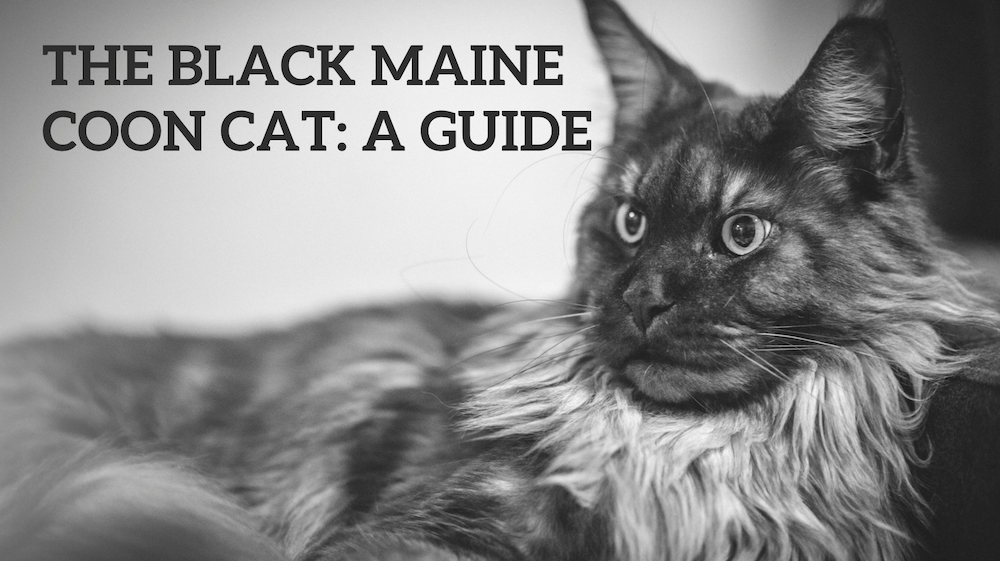
![The Top 9 Best Cat Collars of 2022 [Ranked and Reviewed]](https://petsguide.info/wp-content/uploads/2022/03/Screen-Shot-2022-03-09-at-5.21.33-PM.png)




